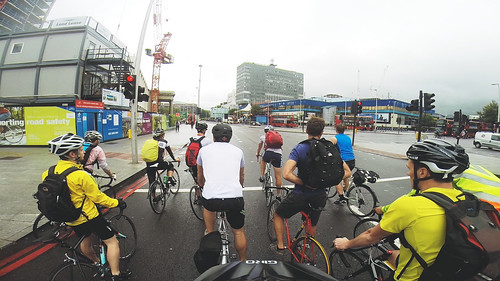How would you like to get something your neighbor has...
...had since 1982?
Well, I have to admit: That question hasn't crossed my mind because, well, I didn't know my current neighbors in 1982. And my neighbors in 1982...well, that was a different world, wasn't it?
Anyway...Last year, one state got something its neighbor had 37 years earlier. And, yesterday, another neighbor got it.
So, which "neighbors" am I talking about? They aren't the folks in the house or building next door. Rather, they're three northwestern states in the United States.
What they all have now is named for one of those states. I've mentioned it in earlier posts: a cyclist's right to ride through a stop sign if the coast is clear.
In our world (i.e., cycling and transportation circles), it's often referred to as the "Idaho stop." The Gem State legalized it the same year Michael Jackson's "Thriller" was released. Since then, other jurisdictions, including a few towns in Colorado and Paris, France, have instituted versions of it. But it took Oregon, Idaho's southwestern neighbor, 37 years to do the same.
Yesterday, cyclists in Washington State, just to the north of the Beaver State, received the same right.
Kudos to Washington Bikes for its work leading to the passage of the law, sponsored by Senator Andy Billig and Representative Joe Fitzgibbon. The Evergreen State lawmakers, and the Seattle Department of Transportation (SDT), cited a study documenting decreased bicycle injuries and improved overall bicycle safety in jurisdictions that implemented versions of the "Idaho Stop." One reason for the improvement in safety is that the "Idaho Stop" reduces the confusion--which sometimes leads to collisions--that results when cyclists stop at signs or motorists give cyclists the right of way when, for example, traffic is entering the intersection from another direction.
Interestingly, the study cited by the SDT also mentions that cyclist safety improves because, in riding through "stop" signs, cyclists spend less time in intersections, where air pollution is greater. Also, cyclists are less likely to suffer overuse or other injuries from continuous stopping and starting.
Now there's a question to be researched: How much does strain and stress increase the risk of cycling accidents?



















